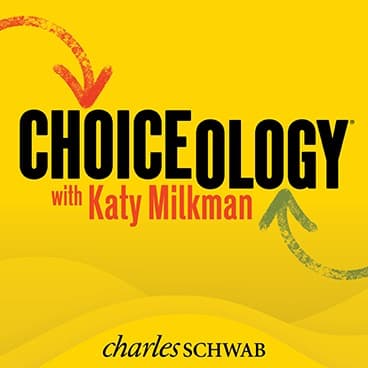Silver Linings: With Guests Annie Duke, Kassia St. Clair & Adam Grant
If you've ever lost a job, or been through a breakup, or failed an exam, you'll know that the aftermath can be painful and disorienting. But for some percentage of those who experience these disappointing outcomes, unforeseen opportunities will arise.
In this episode of Choiceology with Katy Milkman, we look at the occasional upside of being forced to quit a career, or a relationship, or even a favorite route to work.
Kassia St. Clair brings us the story of William Henry Perkin. As a young man in 19th-century London, Perkin had set his sights on a career in chemistry and medicine. He devoted his time and energy to the search for a treatment for malaria, which was a growing problem around the world. Unfortunately, he failed in his quest, but his failure opened the door to a surprising new discovery that transformed an entire industry.
Kassia St. Clair is a design journalist and the author of The Secret Lives of Color.
Next, Annie Duke joins Katy to explain how events like a shutdown of the London subway system, or the COVID-19 pandemic, can sometimes surface new and previously unexplored options. She also discusses how our identities can be wrapped up in our choices, blinding us to alternatives that may actually serve us better.
Annie Duke is a speaker and decision strategist. She's also the author of How to Decide: Simple Tools for Making Better Choices.
Finally, Katy explains that while giving up on important jobs, relationships, or habits may not always be the best option, the behavioral bias of escalation of commitment can cause us to experiment and explore too little in life.
Choiceology is an original podcast from Charles Schwab.
If you enjoy the show, please leave a rating or review on Apple Podcasts.
Learn more about behavioral finance.
All expressions of opinion are subject to change without notice in reaction to shifting market conditions.
The comments, views, and opinions expressed in the presentation are those of the speakers and do not necessarily represent the views of Charles Schwab.
Data contained herein from third-party providers is obtained from what are considered reliable sources. However, its accuracy, completeness or reliability cannot be guaranteed.
The policy analysis provided by the Charles Schwab & Co., Inc., does not constitute and should not be interpreted as an endorsement of any political party.
Investing involves risk, including loss of principal.
The book How to Change: The Science of Getting from Where You Are to Where You Want to Be is not affiliated with, sponsored by, or endorsed by Charles Schwab & Co., Inc. (CS&Co.). Charles Schwab & Co., Inc. (CS&Co.) has not reviewed the book and makes no representations about its content.
All corporate names are for illustrative purposes only and are not a recommendation, offer to sell, or a solicitation of an offer to buy any security.
Apple Podcasts and the Apple logo are trademarks of Apple Inc., registered in the U.S. and other countries.
Google Podcasts and the Google Podcasts logo are trademarks of Google LLC.
Spotify and the Spotify logo are registered trademarks of Spotify AB.



